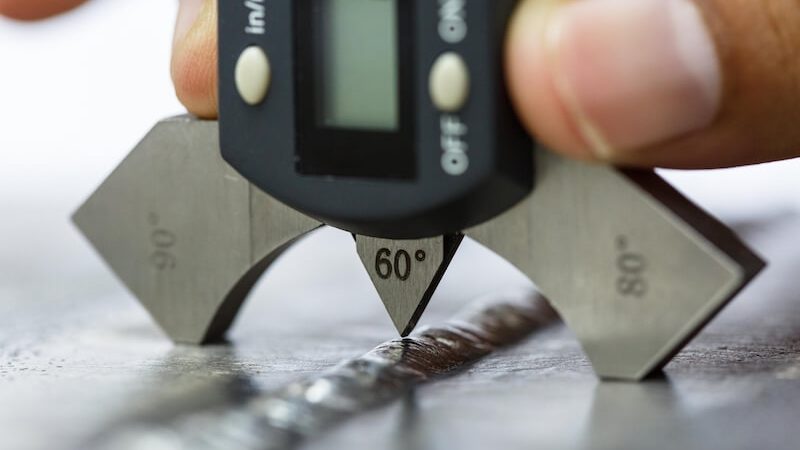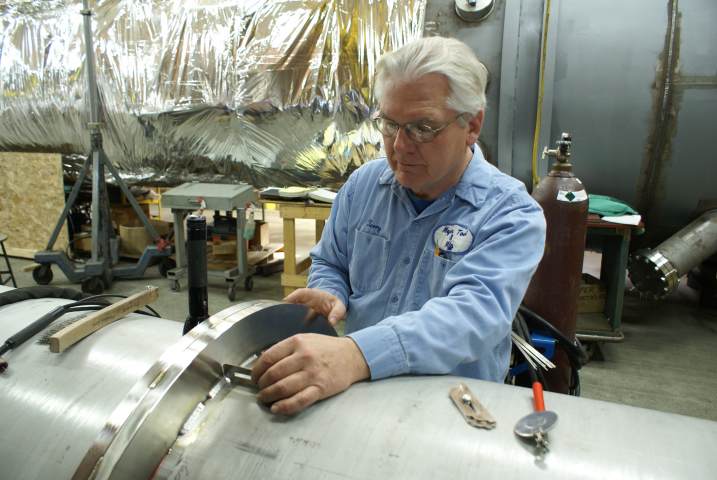Exactly How Welding Examination Works: An Extensive Evaluation of Methods, Criteria, and the Role of Assessors in Making Sure Architectural Honesty and Safety
Welding assessment is a crucial component in the building and production sectors, where the integrity of welded joints is vital to safety and security and reliability. Various techniques, consisting of non-destructive and aesthetic screening techniques, are employed to discover prospective problems that could endanger structural efficiency - Houston Welding Inspection. Assessors are tasked with not only evaluating weld quality against stringent requirements however likewise translating complicated codes and requirements. As we discover the details of this career, the obstacles encountered by assessors in keeping safety and security and conformity will certainly expose a deeper understanding of their vital function in protecting facilities.
Value of Welding Assessment
Welding evaluation is essential in guaranteeing the honesty and security of welded structures, with researches suggesting that up to 70% of architectural failings can be traced back to poor welding methods. This underscores the relevance of methodical evaluation procedures throughout the welding lifecycle, from prep work to completion. Effective examination not just recognizes issues before they rise into considerable problems yet likewise makes sure conformity with sector requirements and policies.

The duty of welding assessors extends past mere high quality control; they are vital in securing public safety and lessening liability for organizations. By applying rigorous assessment methods, business can identify problems such as incomplete blend, cracks, or too much porosity, which can compromise the general toughness of a welded joint. Recurring training and certification of inspectors contribute to the general top quality assurance in welding operations, fostering a culture of security and quality.
Additionally, welding inspection plays a critical function in preserving functional performance. Recognizing defects early at the same time helps with prompt restorative activities, lowering pricey rework and task delays. Ultimately, a durable inspection framework functions as a foundation for reputable and long lasting bonded frameworks, guaranteeing they fulfill both useful and safety demands.
Common Examination Methods
Exactly how can one make sure the top quality of bonded joints throughout the examination procedure? The execution of numerous examination techniques is critical in evaluating weld stability and identifying possible issues. Typical approaches consist of Visual Assessment (VT), which is usually the initial line of protection, enabling inspectors to spot surface problems such as splits, porosity, or insufficient combination by aesthetically analyzing the welds.
Ultrasonic Examining (UT) is an additional commonly used technique, using high-frequency sound waves to determine inner defects within the weld. This approach is specifically efficient for spotting issues that are not noticeable to the naked eye. Radiographic Testing (RT) makes use of X-rays or gamma rays to produce images of the weld, making it possible for the identification of volumetric issues, such as inclusions or gaps.
Magnetic Bit Testing (MT) and Fluid Penetrant Evaluating (PT) are also famous methods, concentrating on surface defects. MT depends on magnetic fields to disclose surface and near-surface discontinuities, while PT includes applying a fluid dye to highlight problems. Each of these methods offers a distinct objective, guaranteeing the thorough examination of bonded joints and securing architectural stability and safety and security.
Requirements for Reviewing Welds
The assessment of welds is led by a set of well-known criteria that make certain both functionality and security in bonded structures. These requirements encompass numerous variables, including weld size, account, and penetration, which need to conform to specified criteria. Conformity with industry codes, such as those set by the American Welding Culture (AWS) or the American Culture of Mechanical Designers (ASME), is essential in identifying the reputation of a weld.

Weld metallurgy plays an important duty; the evaluation thinks about the blend high quality in between base and filler materials, as well as heat-affected areas. The total mechanical buildings, including tensile stamina Check This Out and ductility, need to satisfy the demands established for the specific application. Collectively, these criteria ensure that welds not only fulfill visual criteria however likewise carry out dependably under operational conditions.
Duty of Welding Inspectors
A welding assessor's experience is crucial in making certain the honesty and high quality of welded structures. These professionals play a crucial duty in the manufacture and building process by verifying that welding procedures stick to established requirements and requirements. Their responsibilities incorporate a thorough variety of tasks, including aesthetic evaluation of welds, reviewing welding documents, and carrying out non-destructive testing (NDT) approaches content such as radiographic or ultrasonic testing to recognize defects.
Welding inspectors are additionally in charge of interpreting welding codes and criteria, making sure that the welders are qualified which the materials made use of satisfy the essential needs - Houston Welding Inspection. They need to keep careful records of assessments, which function as documentation of compliance and quality control. Additionally, these assessors typically collaborate with designers and task managers to resolve any concerns that arise throughout the welding process, supplying suggestions for restorative actions when required.
Along with technological skills, effective interaction is crucial, as welding inspectors need to share findings clearly to stakeholders and help with training and support for welders. Inevitably, their role is essential to preserving safety and security and reliability in welded structures, contributing significantly to the overall success of building tasks.

Difficulties in Welding Examination
What challenges do welding inspectors face in their critical duty? The complexities of modern welding methods and products present significant challenges for inspectors entrusted with making certain conformity with security requirements and structural honesty.
Furthermore, assessors frequently experience variations in worksite problems that can impede assessment processes. Factors such as ecological problems, ease of access, and the physical state of the welded frameworks can make complex extensive assessments. Time constraints enforced by job schedules can further pressure assessors, potentially affecting the thoroughness of their assessments.
In addition, the subjective nature of some evaluation methods can bring about disparities in evaluations. Visual examinations may differ based on the examiner's experience and perspective. To alleviate these challenges, the fostering of advanced non-destructive screening techniques and standard methods ends up being crucial - Houston Welding Inspection. Eventually, overcoming these challenges is vital for making sure the safety and dependability of bonded structures throughout numerous markets.
Verdict
Welding evaluation is necessary for maintaining structural stability and safety and security in numerous you can try here industries. With the application of varied examination methods and adherence to recognized requirements, assessors play a pivotal role in ensuring and identifying problems compliance with market criteria. The obstacles encountered in this area highlight the necessity for continuous improvement in evaluation methods and methods. Eventually, reliable welding examination adds dramatically to mitigating threats and boosting the total integrity of bonded frameworks.
Welding examination is an important element in the building and manufacturing industries, where the honesty of bonded joints is vital to security and reliability.Welding inspection is crucial in making certain the honesty and security of welded frameworks, with researches suggesting that up to 70% of structural failings can be mapped back to poor welding methods. Their duties encompass a comprehensive array of tasks, including aesthetic evaluation of welds, reviewing welding documents, and carrying out non-destructive testing (NDT) approaches such as ultrasonic or radiographic testing to recognize problems.
Welding assessors are likewise responsible for analyzing welding codes and standards, making certain that the welders are certified and that the products utilized meet the needed requirements. Inevitably, efficient welding inspection adds significantly to mitigating dangers and enhancing the general reliability of bonded frameworks.
Comments on “Comprehensive Houston Welding Inspection for Enhanced Efficiency and Longevity”